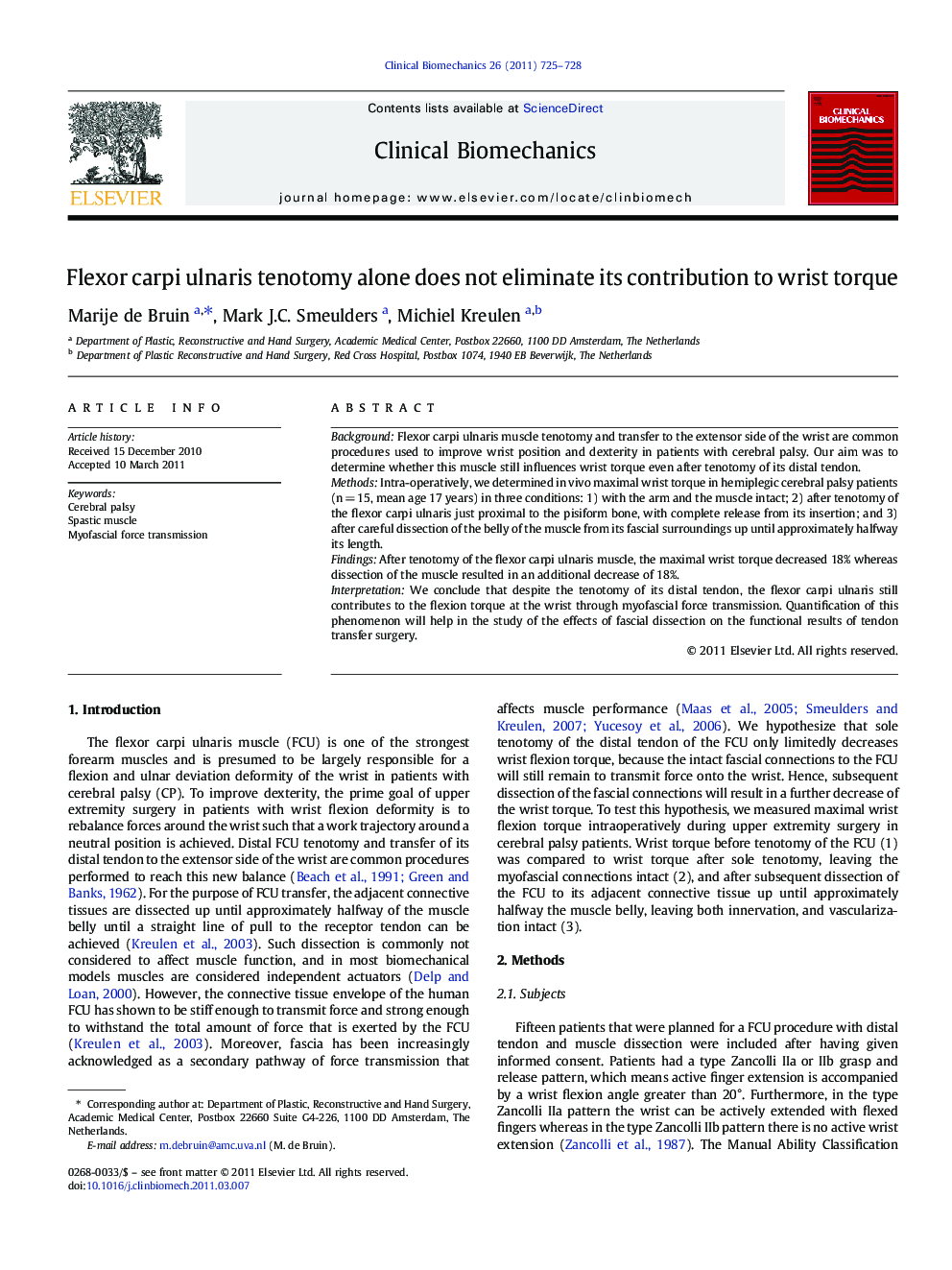| Article ID | Journal | Published Year | Pages | File Type |
|---|---|---|---|---|
| 4050719 | Clinical Biomechanics | 2011 | 4 Pages |
BackgroundFlexor carpi ulnaris muscle tenotomy and transfer to the extensor side of the wrist are common procedures used to improve wrist position and dexterity in patients with cerebral palsy. Our aim was to determine whether this muscle still influences wrist torque even after tenotomy of its distal tendon.MethodsIntra-operatively, we determined in vivo maximal wrist torque in hemiplegic cerebral palsy patients (n = 15, mean age 17 years) in three conditions: 1) with the arm and the muscle intact; 2) after tenotomy of the flexor carpi ulnaris just proximal to the pisiform bone, with complete release from its insertion; and 3) after careful dissection of the belly of the muscle from its fascial surroundings up until approximately halfway its length.FindingsAfter tenotomy of the flexor carpi ulnaris muscle, the maximal wrist torque decreased 18% whereas dissection of the muscle resulted in an additional decrease of 18%.InterpretationWe conclude that despite the tenotomy of its distal tendon, the flexor carpi ulnaris still contributes to the flexion torque at the wrist through myofascial force transmission. Quantification of this phenomenon will help in the study of the effects of fascial dissection on the functional results of tendon transfer surgery.
